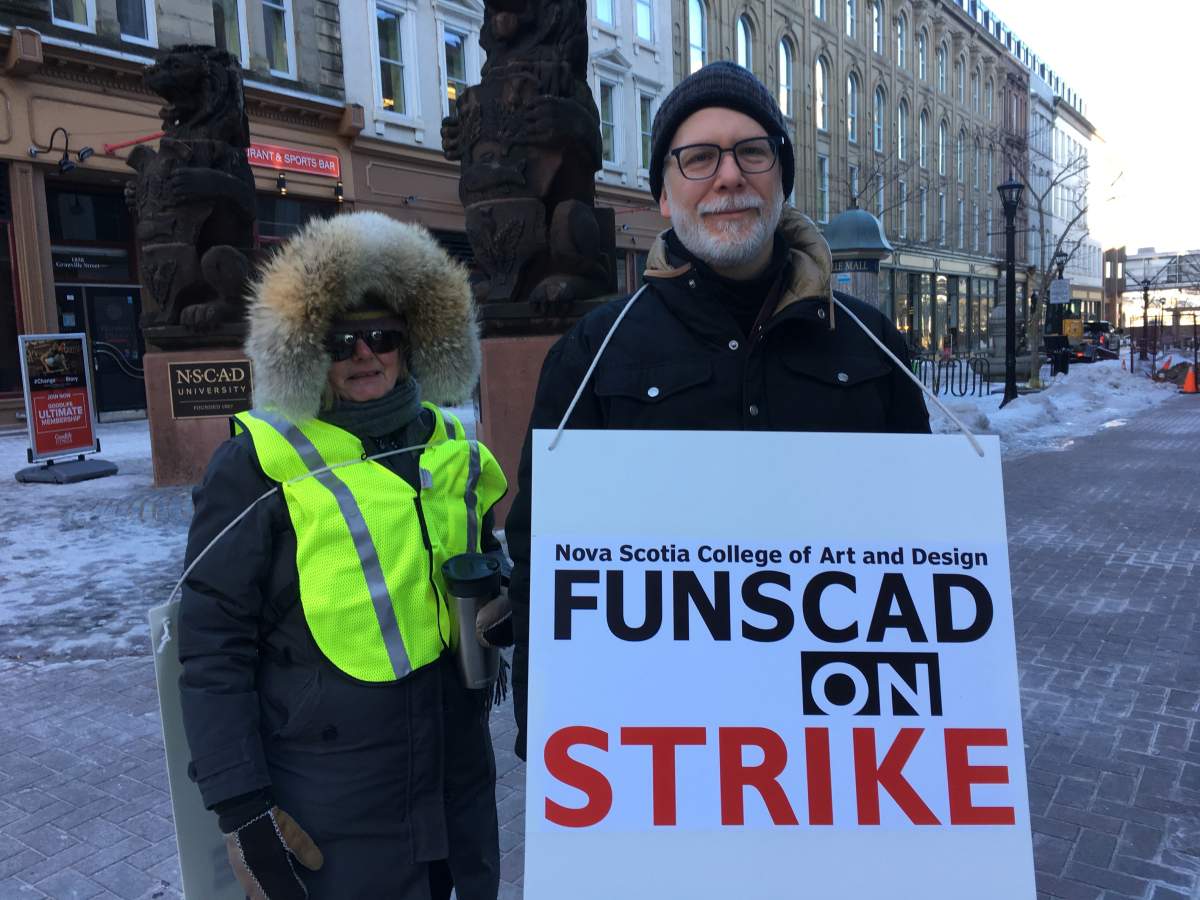Faculty and librarians at the Nova Scotia College of Art and Design (NSCAD) took to the picket lines early Friday morning.

“If you look at the people walking the line right now, a lot of them are students and they understand where the faculty are coming from and they understand that if they show support, hopefully it will actually make this strike shorter,” said Mathew Reichertz, the president of the Faculty Union of the Nova Scotia College of Art and Design (FUNSCAD).
Reichertz says this is FUNSCAD’s first strike since 1986, when the union was first formed.
Union members voted 97.5 per cent in favour of strike action, after what Reichertz’s calls an “impasse in negotiations” with the administration.
The current collective agreement expired on June 30 of last year.

Get daily National news
The union says it has been in negotiations since July over major unsettled issues including workload, wages, job security and support for caregivers.
While headlines for NSCAD have included many stories of financial struggles for the university and declining enrollment, Reichertz says the schools is now “in the black” and that it’s time for the employer to fairly compensate its employees.
“In the last seven years, all of our faculty part-timers and full-timers have essentially in terms of the cost of living, lost about eight per cent of our wages,” he said.
The union president also adds that teachers at the university are just striving to be compensated on par with other university employees in the province.
Another key bargaining concern relates to increased workloads due to layoffs involving administrative staff.
“All of our administrative assistants have been laid off. So, we’ve been working for five or six years without administrative help,” Reichertz said.
“We’ve tried to address the increases in workload that we’ve had, which we feel are unsustainable but we can’t get anywhere at the table with the employer at the moment about those things.”
In response, NSCAD President Dianne Taylor-Gearing says the NSCAD board cannot agree with the union on the terms of negotiation, and adds the reduction in workload from teaching six courses a year to five would leave the institution in financial jeopardy.
“Unfortunately, after a number of conciliation sessions, there was an impasse this week. It’s very disappointing and the students do have access to the studios,” she said.
“NSCAD remains open. The students do a lot of self-directed work and so they have assignments that will be assessed so they are free to come in here and use the facilities. The technicians, we have 26 technicians, are here and they reported for work.”
WATCH: Public engagement starts on potential for cultural hub along Halifax Waterfront

While the strike will disrupt students’ education, many of them say they are standing in solidarity with teachers and staff on the picket line.
“We know that if we’re out here showing solid support, the strike will end faster and that we can be in solidarity with faculty,” said Kassidy Bernard, the president of the NSCAD Student Union.
Bernard says the main concerns students have involving the strike are potential disruptions to graduation dates.
— With a file from The Canadian Press and Jesse Thomas








Comments